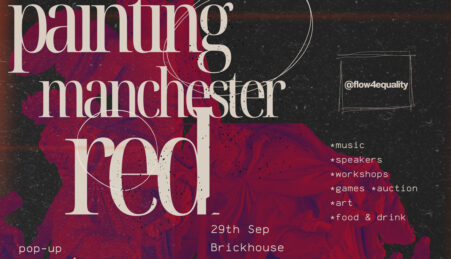By Callum Willmott
As I left the Cornerhouse showing of The Cabinet of Dr. Caligari, something unusual occurred to me. Whilst the lights reappeared in the screening theatre, I noticed a lack of reaction among the other audience members. Most of this, I soon realised, seemed to come from bemusement. Who was Caligari? What happened to the main character? And what exactly was it all about?
Those familiar with the ending of Robert Wiene’s Expressionist masterpiece will know what I mean by this. Walking out of the cinema, however, another, even stranger thought came to me. What would the original audiences have thought of it? It goes without saying that comparing these types of things can be difficult, especially with a film from 1920. I had had high hopes, then, that the restoration might give a new spin on Caligari, or at least answer the question: How does the film hold up today?
Of course, Caligari’s influence on cinema is immense. Dubbed by Roger Ebert as perhaps “the first true horror film,” the movie itself has inspired a wealth of directors. Tim Burton, for example, would go on to emulate the Expressionist set designs. Similarly, the film’s stark, contrasting lighting has since made its way onto the screens of a number of other important filmmakers. Alfred Hitchcock, Howard Hawks, David Lynch and even Orson Welles would all cite Caligari as a notable influence on their work.
The plot itself, surprisingly, is not a startling one. Presented as a flashback of the young Francis, the film revolves around the appearance of Dr. Caligari, a shadowy sideshow operator. As the story begins, Caligari arrives in the town of Holstenwall with the intention of showcasing his headlining attraction; a near silent, fortune-telling somnambulist named Ceasre. During one of the shows, Francis’ friend Alan bravely confronts the figure, asking “How long will I live?” The answer, however, is haunting. Until next dawn. By the morning Alan is dead.
 What makes Caligari so unique is its use of set. By placing its action in the midst of jagged landscapes, the film envelopes the audience in a world of bizarre proportions; askew walls and tilted, looming trees. The effect is like that of a living nightmare, an Expressionist fantasy. Even the characters seem to fit perfectly within this troubled scenery; from the zombie-like Ceasre to the jerky, unnatural movements of Francis and Jane. I was eager, then, to see how a restoration would convey these images. Having seen the film in its former state, I was only dimly aware of the classic’s revamped look.
What makes Caligari so unique is its use of set. By placing its action in the midst of jagged landscapes, the film envelopes the audience in a world of bizarre proportions; askew walls and tilted, looming trees. The effect is like that of a living nightmare, an Expressionist fantasy. Even the characters seem to fit perfectly within this troubled scenery; from the zombie-like Ceasre to the jerky, unnatural movements of Francis and Jane. I was eager, then, to see how a restoration would convey these images. Having seen the film in its former state, I was only dimly aware of the classic’s revamped look.
The result, I believe, gives the film a slightly new dimension.
One thing I was unaware of before viewing this version was the movie’s original colour. In comparison to the craggy, age blemished black and white I had become used to, the restoration presents the viewer with its initial tinted palette; reddish browns and blues covering the screen. Whilst not strictly speaking a new addition, it does give Caligari’s warped reality an even more unsettling twist. Likewise, I was interested to hear how the music of this screening would compare to my previous viewings. This, especially with silent film, can be problematic (I once saw a version of The Kid backed by the music of Vivaldi, to name one of my odder experiences in this area), and Caligari is no exception. Like the later Expressionist film Metropolis, the work has been subjected to a range of differing scores; ranging from lilting Classical to synthesized avant garde. Once again, I was pleasantly surprised here. Backed by original music from composer John Zorn, the score found the right balance between creepy and graceful, enhancing perfectly the onscreen world.
Aside from this, the classic images of the film remain intact. Revisiting such unique frames as the close up of a crazed Caligari, the digital restoration gives these moments a cleaner visual clarity. Of course, some spots and blemishes remain on the screen (a number of reels were supposedly damaged before the restoration), however this only adds to the overall atmosphere. In addition, an array of extended scenes are included; bumping up the ‘old‘ running time of fifty one minutes to a more suitable hour and eleven minutes.
I now go back to my original question: how does this film hold up today? The answer, I feel, is quite well. Caligari shifts us into a distorted world; a place where reality itself must be questioned. It may be difficult to imagine, but bemusement is part of the film’s charm, although it is also an entertaining viewing. Whether you’re a fan of classic movies, horror films or just interested in an old flick for Halloween, Caligari is an essential piece of cinema.
Callum Willmott is a second year English and Film student who enjoys reading, writing and (very) amateur photography. You cannot follow him on any blog or twitter…






Leave a reply